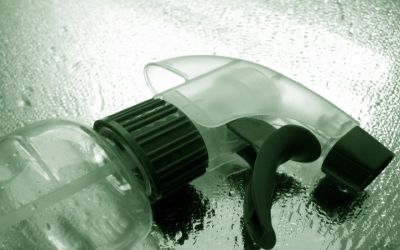CDC Offers Guidance on Evaluation of Environmental Cleaning

The Centers for Disease Control and Prevention (CDC) has released guidance for programs to optimize the thoroughness of cleaning of high-touch surfaces. The guidance recommends a two-level program administered by infection preventionists and coordinated and maintained through environmental services professionals.
The document, Options for Evaluating Environmental Cleaning, was prepared by Alice Guh, MD, MPH, of the Division of Healthcare Quality Promotion in the National Center for Emerging and Zoonotic Infectious Diseases at the CDC, and Philip Carling, MD, of Carney Hospital and Boston University School of Medicine in Boston. Assistance in document preparation was provided by Brian Koll of Beth Israel Medical Center in New York; Marion Kainer and Ellen Borchers from the Tennessee Department of Health in Nashville, Tenn.; and Brandi Jordan of the Illinois Department of Public Health in Chicago.
The document notes, In view of the evidence that transmission of many healthcare-acquired pathogens (HAPs) is related to contamination of near-patient surfaces and equipment, all hospitals are encouraged to develop programs to optimize the thoroughness of high-touch surface cleaning as part of terminal room cleaning at the time of discharge or transfer of patients. Since dedicated resources to implement objective monitoring programs may need to be developed, hospitals can initially implement a basic or Level I program, the elements of which are outlined below. Some hospitals should consider implementing the advanced or Level II program from the start, particularly those with increased rates of infection caused by healthcare acquired pathogens (e.g., high Clostridium difficile infection rate). All hospitals that have successfully achieved a Level I program should advance to Level II.
The document continues, At present, the objective monitoring of the cleaning process of certain high touch surfaces (e.g., the curtain that separates patient beds) beyond those outlined in the attached checklist is not well defined. Additionally, there is no standard method for measuring actual cleanliness of surfaces or the achievement of certain cleaning parameters (e.g., adequate contact time of disinfectant) or for defining the level of microbial contamination that correlates with good or poor environmental hygienic practices. As our understanding of these issues evolve and a standardization of assessment in these respective areas can be developed and practically implemented, hospitals that have obtained a high compliance rate with surface cleaning as outlined in the Level II program are encouraged to advance their efforts in optimizing environmental hygienic practices.
To access the guidance document, CLICK HERE.Â
Â
Vet IP Roundtable 2: Infection Control and Biosecurity Challenges in Veterinary Care
March 31st 2025Veterinary IPs highlight critical gaps in cleaning protocols, training, and biosecurity, stressing the urgent need for standardized, animal-specific infection prevention practices across diverse care settings.
Invisible, Indispensable: The Vital Role of AHRQ in Infection Prevention
March 25th 2025With health care systems under strain and infection preventionists being laid off nationwide, a little-known federal agency stands as a last line of defense against preventable patient harm. Yet the Agency for Healthcare Research and Quality (AHRQ) is now facing devastating cuts—threatening decades of progress in patient safety.
From Shortages to Security: How Reusable Health Care Textiles Can Transform Infection Prevention
March 7th 2025Reusable health care textiles enhance infection prevention, reduce waste, and strengthen supply chains. Hygienically clean textiles offer a sustainable, cost-effective alternative to disposable PPE, ensuring patient safety and environmental responsibility.